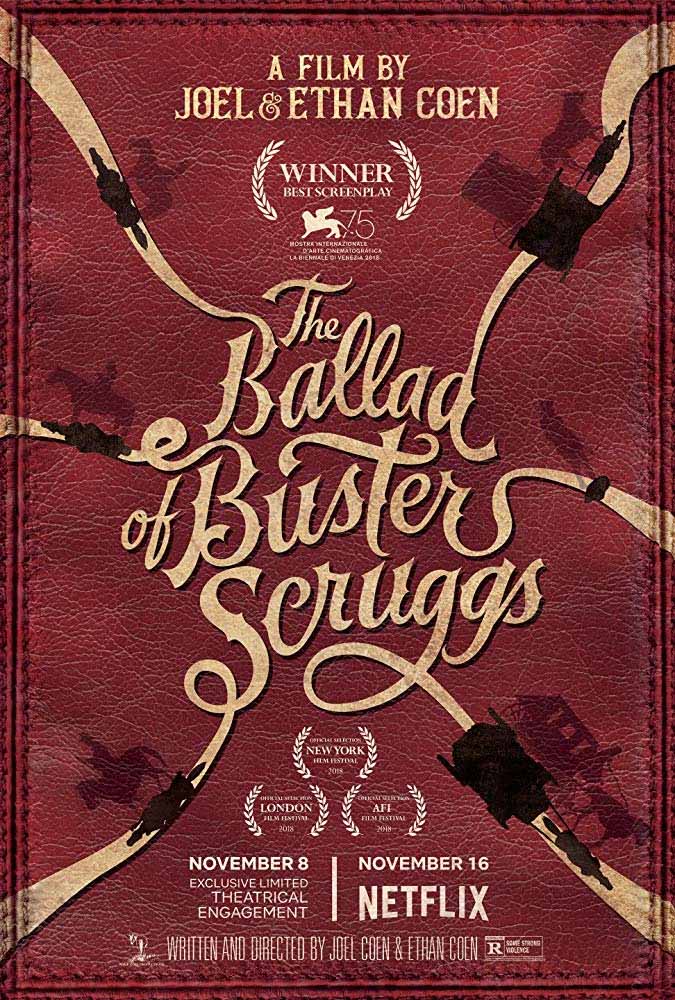Late last year, the Coen brothers’ newest film, “The Ballad of Buster Scruggs,” debuted on Netflix, and their biggest fans should be overjoyed to know that it has everything you could hope for in one of their films. It’s unique but still reminiscent of some of their most iconic works.
The writing, directing and editing duo — known for quirky films like “The Big Lebowski” and cinematic masterpieces like “No Country for Old Men” — has created yet another quintessential Coen film in “The Ballad of Buster Scruggs.”

Photo courtesy: IMDB
This Wild West adventure tells its story in an unconventional way, as it takes viewers through six chapters of unique characters and their journeys through the American frontier. These stories have a range of focuses, from violence to romance to comedy. We are given quotable moments in every segment (“Pan shot!”) while also being asked to try to understand the real meaning of each chapter.
One of the chapters that lingers in the mind the longest after watching this movie is “The Gal Who Got Rattled.” In this segment, we see the best performances of the film from Bill Heck as Billy Knapp and Zoe Kazan as Alice Longabaugh, along with the rest of their supporting cast members.
“The Ballad of Buster Scruggs,” much like other works by the Coen brothers, can be pessimistic and existential because they focus on negative aspects of humanity and the purpose of its existence. However, “The Gal Who Got Rattled” brings a refreshing tone to the film, as it introduces likeable protagonists whose stories intertwine on the Oregon Trail where they find love. The dialogue is poetic with a comedic touch to every line that it delivers. Even though it ends in tragedy, the relatable characters and engrossing story make it an enjoyable segment.
“The Gal Who Got Rattled” was easier to connect with than the other chapters, but that is the Coen Brothers’ goal in presenting this film. Every segment wants us to take a look at certain parts of humanity and ask questions.
This may not be easy to see upon the first watch, and as a result, the whole film might seem pointless. Chapters are oftentimes without definite plot, beginning or end. Since much of “The Ballad of Buster Scruggs” is left up to interpretation, those who prefer resolutions in the movies will likely have a hard time enjoying it.
There is much more to praise about this film than just the interesting characters and the story. With this being the first film the Coen brothers have shot digitally, as opposed to using film, the picture looks very crisp and clear, but it is often labeled as “cartoonish.” The way this appearance is perceived depends entirely on the preference of the audience.
There are parts to like, along with parts to dislike, when it comes to digital filmmaking, but it is a change that gives a different kind of look to a narrative that is undeniably Coen-esque. Having period costumes, vast landscapes and close-ups accentuated on the screen is one big positive of digital cinematography. The digital shooting doesn’t hurt the film in any major way; it just takes away from the traditional style of filmmaking that we are used to seeing from the Coen brothers.
Overall, “The Ballad of Buster Scruggs” entertains through six different chapters that take us on wild adventures across America’s frontier, and we are fortunate enough to be able to stream this on Netflix.






